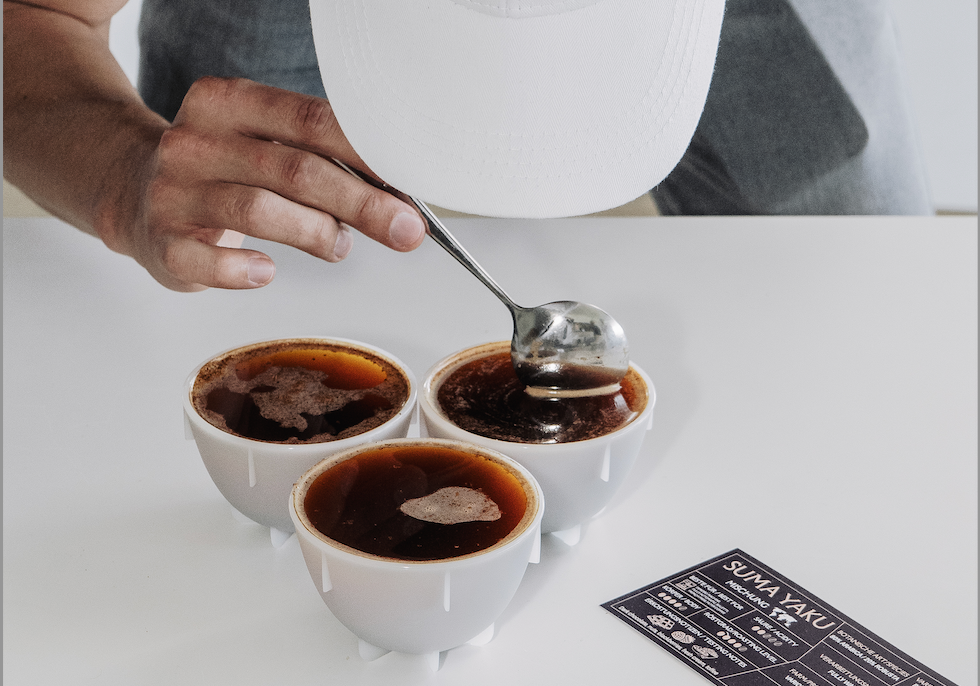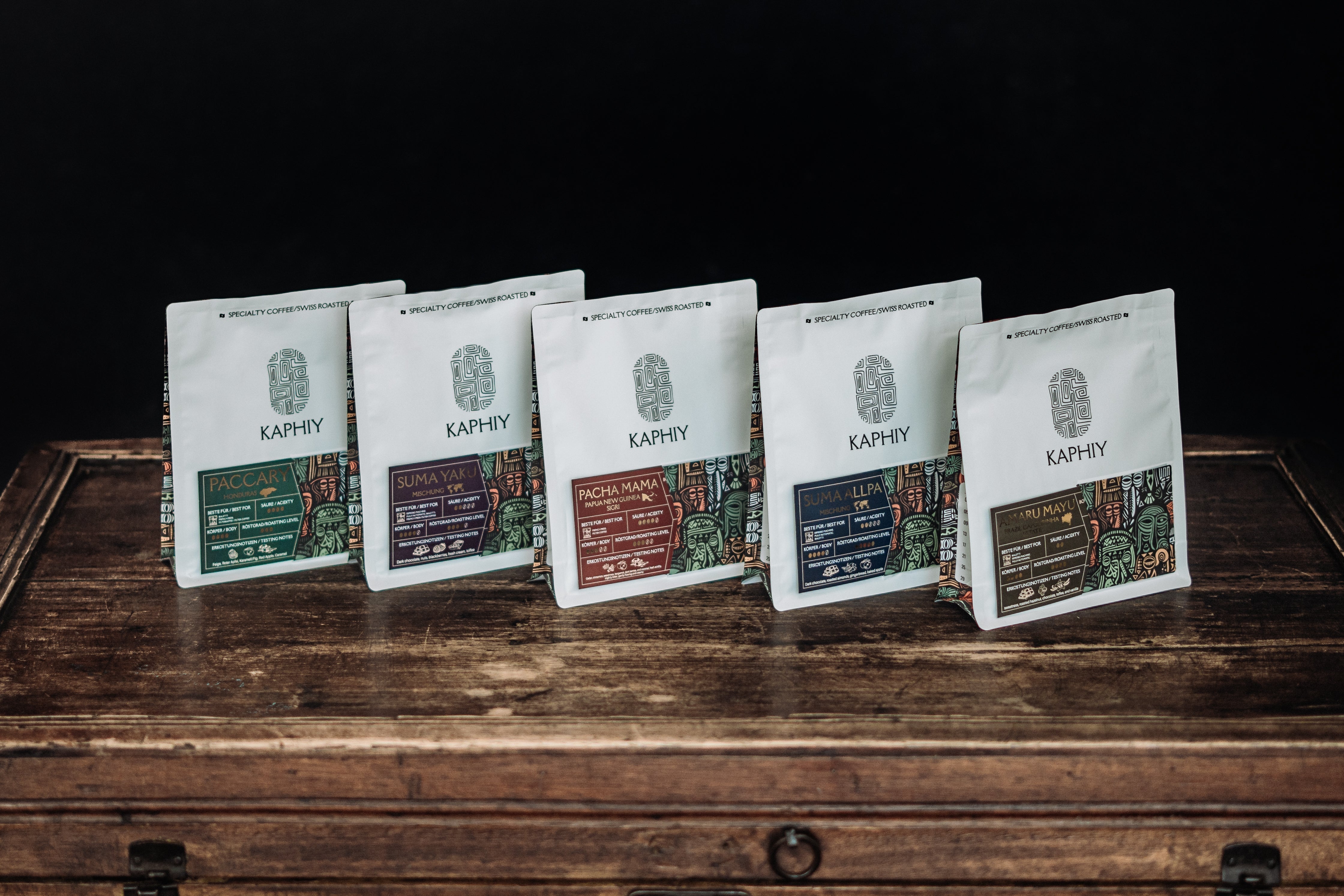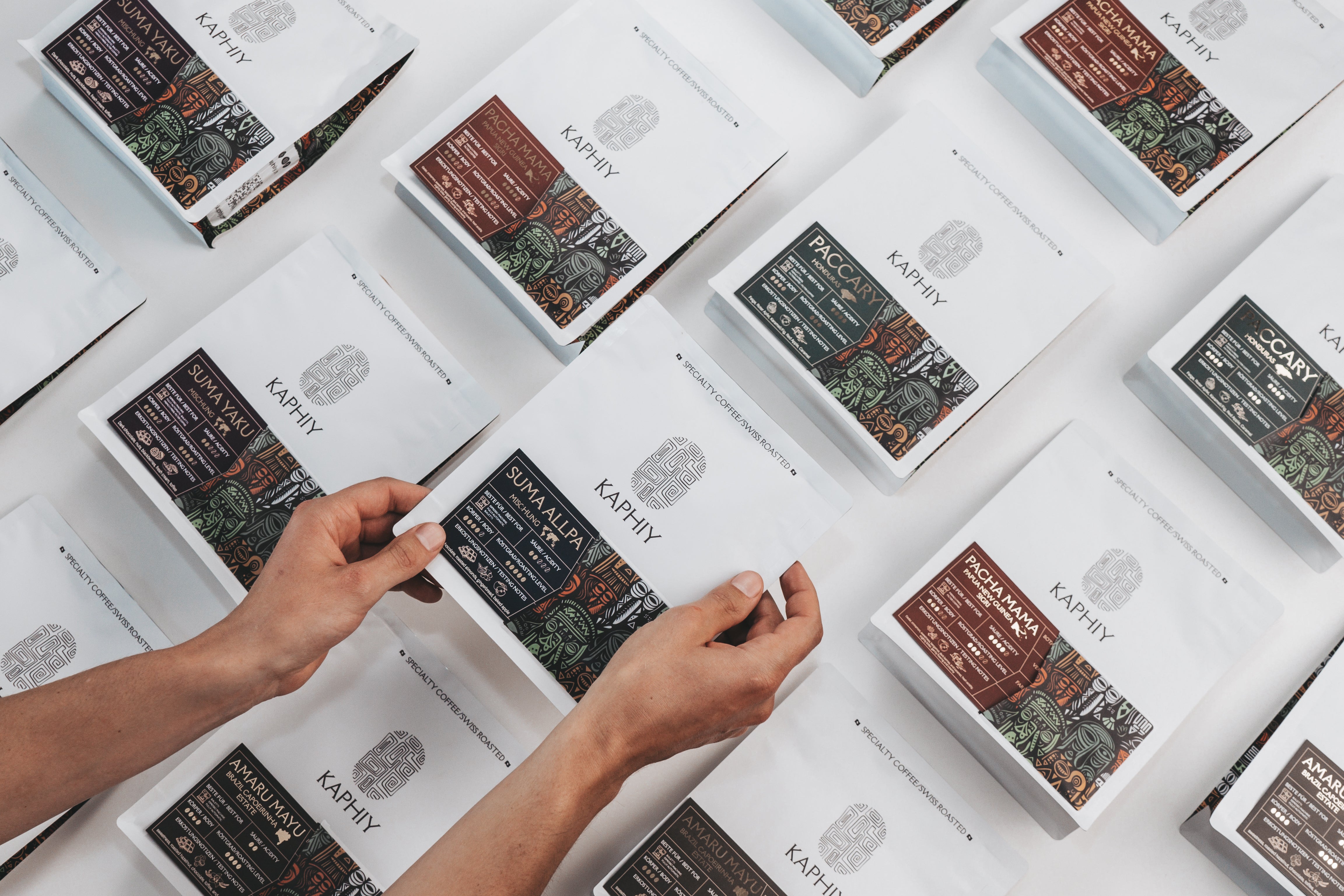
CUPPING: THE ART OF TASTING COFFEE LIKE AN EXPERT
WHAT IS COFFEE CUPPING & WHY IS IT IMPORTANT?
Have you ever wondered how coffee professionals evaluate the quality of each bean?
The answer lies in cupping – a structured, standardized tasting method that assesses aroma, flavor, body, acidity and aftertaste.
At Kaphiy, cupping is at the heart of everything we do. It helps us select the best specialty coffees, refine our roast profiles, and guide you to the perfect cup.
Whether you're a barista, a home brewer, or simply a passionate coffee lover, tasting coffee properly can revolutionize your perception of each cup.

WHAT IS COFFEE CUPPING & WHY IS IT IMPORTANT?
Cupping is used worldwide to:
- To compare different coffees: to identify unique characteristics between countries of origin, varieties or processing methods.
- To ensure consistency: to monitor roasting profiles and detect possible defects.
- Improve sensory skills: train the palate to perceive subtle nuances in aroma and taste.
Modern cupping has evolved beyond pure taste evaluation. The Specialty Coffee Association (SCA) now uses an expanded system for evaluating coffee.
- Physical evaluation: size, shape, quality and defects of the beans.
- Descriptive evaluation: The objective, intrinsic characteristics of each origin and variety.
- Affective evaluation: The subjective quality in the cup – that is, how appealing the taste is perceived.
- Extrinsic evaluation: environmental and social impacts, the producer’s value proposition and the overall context around the coffee.

HOW COFFEE CUPPING WORKS
Coffee cupping follows a standardized process to ensure that each bean is objectively evaluated. Here is a step-by-step guide:
1. GRIND & SMELL
Freshly ground coffee unfolds its dry aroma – here you can first perceive floral, fruity, nutty or chocolatey notes.
Measuring & Grinding (Fragrance):
- Use 8.5g of coffee per cup with a roast color of 60-65 Agtron (“Commercial” range).
- Grind to a fineness of approx. 850 μm , ideally grind no more than 15 minutes before cupping.
- Smell the dry aroma of the freshly ground coffee – look for floral, fruity, nutty or chocolatey notes.
Tip: Use the Ode Brew Grinder Gen 2 for precise and consistent grinding.
2. ADD HOT WATER & OBSERVE
After pouring hot water, the coffee releases its wet aroma, which intensifies the fragrance profile.
Add hot water (flavor):
- Use 150 ml of water (with a TDS of 75-250 ppm and a pH of about 6.5 ) heated to 93 °C .
- Pour the hot water over the coffee grounds and watch the aroma intensify. This "wet aroma" can reveal new scents or enhance the dry aromas already present.
Pro tip: Use a precise scale like the Acaia Pearl Digital Scale to measure the exact ratio of coffee to water.

3. BREAK THE CRUST & BREATHE DEEPLY
A layer of coffee particles (the “crust”) forms on the surface – hidden aromas are released by gently breaking them.
Wait, break the crust & breathe deeply:
- After pouring, a layer of coffee particles (“the crust”) forms on the surface. Let the coffee brew for 4 minutes .
- Gently break the crust with your cupping spoon and stir three times . Breathe deeply to sense the newly released aromas.
- Remove any remaining foam or coffee particles from the surface to clear the cup.
4. SWALLOW & TASTE
Cuppers use a spoon to loudly suck in the coffee – this distributes it evenly on the tongue and reveals flavor, acidity, body and aftertaste.
Taste & Rate:
- After about 9-10 minutes, the coffee will be cool enough to taste. Slurp the coffee with your spoon so that it spreads evenly across your palate.
- Pay attention to the acidity (bright & tangy or smooth & round?), the body (light & tea-like or full & syrupy?), the flavor (chocolate, citrus, berries, caramel or spices?) and the aftertaste (quickly fading or pleasantly long-lasting?).
WHAT DO WE EVALUATE IN COFFEE CUPPING?
During cupping, professional tasters (and you!) analyze several key aspects:
- Aroma: The first impression – floral, fruity, nutty?
- Acidity: Lively and tangy or soft and round?
- Body: The texture – light like tea or syrupy and full-bodied
- Flavor notes: hints of chocolate, citrus, berries, caramel or spices?
- Aftertaste: The remaining impression – does it disappear quickly or does it linger for a pleasantly long time?

Do you want to train your sense of taste? Join our Sensory Training Course at the Academy by Kaphiy and develop your sensory sense like a professional coffee taster.
ENRICH YOUR COFFEE JOURNEY WITH THE ACADEMY BY KAPHIY
At Academy by Kaphiy , we believe that a deeper understanding of coffee leads to better brewing.
Whether you want to refine your tasting skills, perfect your brewing technique, or learn from industry experts, our courses are designed for coffee lovers of all experience levels.
DISCOVER OUR COURSES:
✔ Intensive Sensory Workshop: Learn to recognize different aromas and analyze coffee like a pro.
✔ Fast Taste Workshop: Learn the most important techniques to discover the full aroma and flavor profile of coffee.
✔ Espresso Alchemy (online): Immerse yourself in the techniques of grinding, tamping and the perfect espresso extraction.




